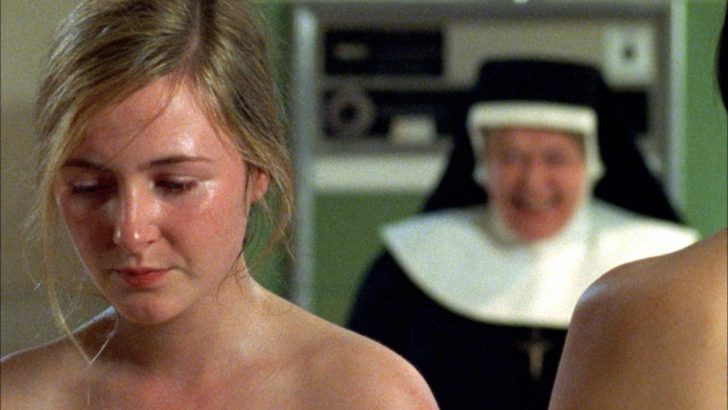Future historians will find a more nuanced and balanced account of the past than most members of the public have been led to believe, writes David Quinn
There have now been three official reports in a row that upset the accepted media narrative about the culpability of the Church concerning their subject matters.
The first, published in 2013, dealt with the Magdalen laundries and what took place in them. The second, from 2016, was about symphysiotomy, a procedure sometimes used as an alternative to caesarean section, and about which the Church was fiercely attacked.
The third and latest is, of course, the 2,800-page report on the mother and baby and county homes.
In each case, the media narrative is that the Church was almost wholly responsible for what took place and that were it not for the Catholic Church, we would not have had Magdalen laundries, symphysiotomy would not have existed, and there would have been no mother and baby homes.
At a minimum, we’d have had a lot less of all three.
With regard to the Magdalen homes, the average person probably takes their view from the movie, which seems to be on constant repeat on RTÉ, The Magdalene Sisters in which the young women in the laundry are brutally treated and physically abused.
In fact, the Magdalen laundries report, which was overseen by Martin McAleese, spoke to former residents. It says: “The vast majority…told the Committee that the ill-treatment, physical punishment and abuse that was prevalent in the industrial school system was not something they experienced in the Magdalen Laundries.”
What they did report was emotional cruelty by some of the nuns.
The report was at pains to point out that Magdalen homes were neither uniquely Irish nor uniquely Catholic. Britain had hundreds of them in the first part of the last century, for instance, and the last of them did not close until the 1970s, by which time they had been rebranded ‘training schools’.
Senator Regina Doherty has described the tone of the report as “cold” and “callous”. She believes the Government should not accept it”
They were established in the first instance to rehabilitate prostitutes and other ‘fallen women’, when nothing else was on offer, but became a dumping ground for too many of society’s problems.
The symphysiotomy report was overseen by Judge Maureen Harding Clark. It was set up on the strength of allegations that this procedure, which involves widening the pelvis to make it easier for a woman to give birth, was a product of Catholic theology because if it became easier for a woman to give birth, she might not resort to artificial birth control in the future.
It found scant evidence of a theological justification for the procedure, although it was used somewhat more frequently, and later, in Ireland that in most other European countries. To this day, the World Health Organisation (WHO) recommends its use where caesarean sections are unsafe due to the danger of blood poisoning developing.
A remark-able finding was that a third of women who reported having undergone a symphysiotomy underwent no such thing.
Women made such statements as: “I will never forget the sound of the saw cutting into me”, or “a nurse told me that they had to cut/break my pelvis”. But they never had the procedure.
In her report, the judge is critical of much of the media coverage of the issue.
She refers to an earlier, balanced history of the matter by Prof. Oonagh Walsh, stating: “To a great extent, her scholarly report has been ignored by sections of the media who appear to prefer the more lurid and unfounded accounts projected by some activists and bloggers. I am therefore not sanguine that there will be any change in the manner of reporting of the subject.”
She might well have written the same thing about the mother and baby homes report.
In fact, the new report warns that its conclusions “may not always accord with the prevailing narrative”.
These reports, while they might find disfavour with the media, are nonetheless now on the public record”
This is exactly right, and therefore the report has been roundly attacked by large sections of the media since its release.
Senator Regina Doherty has described the tone of the report as “cold” and “callous”. She believes the Government should not accept it.
But the tone is little different from that found in the Magdalen laundries report or the symphysiotomy report, that is to say, it is objective and fact-based.
They are substantially different from the tone of earlier reports, since as the Ryan Report on industrial schools because the scale of physical and sexual abuse in those places was so bad in many instances.
The reason the most recent reports do not accord with the media narrative, and the authors anticipated the reaction, is because that narrative wants to accept all the most lurid stories as being both true and representatives of all that happened, and to lay almost all the blame at the feet of the nuns.
Therefore, there is anger when the mother and baby homes report does not find evidence of illegal adoptions, or widespread physical abuse, or that the nuns were made a profit out of the homes, or that 800 babies were buried in a septic tank (although they were buried ‘inappropriately’ to use the word chosen by the commission itself).


 David Quinn
David Quinn A scene from the film The Magdalene Sisters that has informed much of
the commentary around these institutions
A scene from the film The Magdalene Sisters that has informed much of
the commentary around these institutions